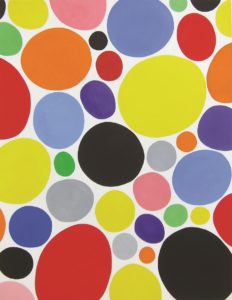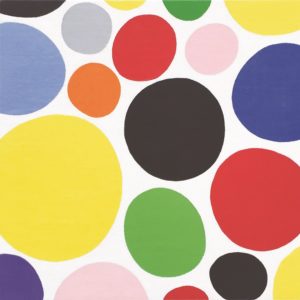In the text accompanying James Balla’s Into the blue again, the catalogue for his 2013 show at the Provincetown Art Association and Museum, he wrote, “Good art is always elegant. It can be dirty and crude and offensive, but it always strives for the highest level of expression.”
Balla and his husband, Albert Merola, who run Albert Merola Gallery in Provincetown, embody that aesthetic to the fullest. The gallery is always elegant in design and presentation, though the artwork inside is thoroughly eclectic, ranging from the pop culture dreams of John Waters to the male nude photography of Jack Pierson, the rustic found wood sculptures of Paul Bowen, and the vibrant urban narratives of painter Esteban del Valle.

Balla and Merola have maintained the gallery since 1988, starting as Universal Fine Objects (or UFO), and Balla has been showing his paintings and prints there regularly. The two moved here from New York City in 1984, after Balla finished his studies at Parsons School of Design.
Balla’s new show at Albert Merola Gallery, opening on Friday and running through Sept. 15, features a series of paintings he calls “Songs Without Words,” a title derived from piano works by Felix Mendelssohn — lushly romantic lieder that the composer felt expressed thoughts that were “too definite” to be put into words. Balla’s oil paintings are, likewise, joyously abstract — bright, even-toned circles and ovals that float freely on rectangular and square white backgrounds.
Balla says an early inspiration for his love of art came from a Piet Mondrian painting he was shown in fifth grade in Norwalk, Conn. “It blew my mind,” he says. Perhaps it’s just a coincidence, but the paintings of “Songs Without Words” are a bit like a Mondrian composition reflected in a ’60s pop art funhouse mirror.
The titles Balla gives the pieces provide another twist. “I have always titled my work, but I’ve wanted there to be a space between the painting and the title,” he says. “For this current work, I take sound effects (KLUMMP, WHOOSH, SMACKO) and use them as titles exactly as they’re expressed in comic books in capital letters. I wanted to have something that was a word but not really a word.”

He describes himself as having been a “comic book junkie” as a kid, and, in a 2012 series of oils, he painted cloud and sky imagery derived from comic book panels with the action and narrative removed. In keeping with this deconstruction, “The paintings were titled with the words used in the original frame,” Balla says.
Pop and minimalist influences may be evident in Balla’s work, but he has also done several series of abstract expressionist monoprints and oil paintings, and he considers drawing, much of it figurative, to be “an integral part of being an artist.”
His degree from Parsons is in sculpture — “I loved welding,” he says — but he didn’t have the space to pursue metalwork in Provincetown, so he focused on painting, drawing, and printing. Even so, his artistic pursuits have remained diverse. He’s worked on stained glass windows with Jeanne Bultman. He and Merola have made furniture, lighting, and floorcloths, with an interest in African masks and tribal imagery.
The finished pieces in “Songs Without Words” are oil paintings, but “the process of creating them is a sculptural one,” Balla says. “A while back, I was given some papers from a dear friend that were painted with gouache in different colors. Over the years, I’ve cut them up and made small works or cards out of them to give to people. But I’d always wanted to see them as paintings. And, for me, the only way to make that happen would be to cut out shapes in paper and arrange them on the linen. Tracing those, I give myself a place to begin the process of painting. So, in a sense, creating the piece involves drawing, sculpture, and painting all together.”

Balla is devoted to the artists he and Merola represent at their gallery, but when it comes to his own work, he gives his creative impulses free rein. “I’ll just be sitting down at my desk and working on something, and, if I like it, I’ll do another,” he says. “I’ll do it again and again and again with no judgment on whether it’s good or bad. Before long, you look around and there’s a room full of work.”
It’s a continuous process. “Think of this show as a page in a picture book, or a chapter of a novel, or a passage in a piece of music,” Balla says. “It is part of a larger whole, and, although it stands on its own, it’s connected to the rest. Mahler’s Fifth Symphony is an incredible work, but the adagietto from it was used unforgettably in the film Death in Venice. For all the feeling one gets from that passage, it’s still part of a greater whole. In that way, these current paintings are a part of the ongoing work that I do.”



